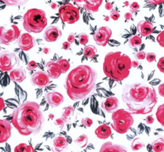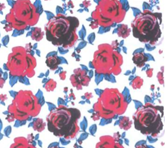Designs v Copyright
If you could eavesdrop on the dinner parties of fashion designers, the one question they would be asking is… How do you stop other people copying the garments to which designers have poured their heart and soul?
Let’s take a shirt for example. One with a collar and cuffs, a shorter front than back and some fancy pleating to make you look slimmer. It’s a new, unique type of design. One seen on the runway of the Melbourne fashion shows. In Australia, as the result of the way in which copyright and design laws work, it is not possible to bring an action for copyright infringement if a third party copies the way that shirt looks, even though the ragged collar and cuffs that have been cut with triangular scissors have never been seen before.
The law on what is called the “copyright/design overlap” issue is complex but the idea, for the dinner party guests, can be put like this. When the designer created the artistic work for the shirt, the artistic work most likely attracted copyright protection but possibly, not for long.
The “copyright/design” overlap issue arises where goods made to a design are sold or offered for sale anywhere in the world, and at that time the design couldn’t or hasn’t been registered under the Designs Act 2013. Once goods made from the design are then published in Australia, and they embody the design, a third party can copy the artistic work to produce their own goods and won’t infringe the designer’s copyright.
Put more simply, once shirts are made in accordance with the artistic work and sold in Australia, the copyright in the artistic work is lost. Other people are now free to make their own shirts in the same design.
So, what’s the answer?
In the case of the shirt, it may be so new and distinctive, that it is possible for the designer to obtain a design registration. It’s a means of protection that many in Australia think is not used enough. Once a design has been registered, examined and certified, those registered rights can be used to stop third parties from copying the design.
Imagine our shirt also has a lovely tropical print on the fabric. The original artistic work of that tropical print ticked all the boxes so that it is protected by copyright. The application of the print to the fabric does not attract the copyright/design issue because it is only a two dimensional reproduction of the artistic work. This means that if another shirt manufacturer copies the tropical print on the fabric, then it is an infringement of copyright in the artistic work.
Let’s look at some examples
In 2008, Review Australia Pty Ltd, a well-known Australian women’s clothing designer and retailer, started two sets of proceedings for design infringement. It won one and lost one, but in both, the validity of the design was upheld. In the case that Review won, it also received $103,509.20 for loss of profits, $200,000 for damage to reputation and $50,000 in additional damages.
In 2021, it was a claim for copyright infringement that saw Cotton On Australia and Ghanda end up in the Federal Court in 2021. Both companies compete in the fashion industry in Australia. Ghanda claimed that Cotton On Australia had sold, via its Supré stores, a number of garments that infringed Ghanda’s copyright. Cotton On denied the infringements and claimed that the threats were unjustified. It also said that Ghanda had copied some of its designs. In a case that was no doubt going to be long, complex and expensive with neither party having a clear-cut case, they went to mediation and settled.
In 2014, swimwear designer and manufacturer, Seafolly successfully sued Fewstone for infringement of copyright in a number of Seafolly’s fabric designs for its bikinis. Below are images of one of Seafolly’s fabric designs next to the infringing one of Fewstone.
Seafolly Fewstone


The Moral of the Story?
Our recommendation to fashion designers is look at design registration for the shape of a garment if the design is new and distinctive. In the case of fabric prints, get your copyright house in order as this is shaping up to be a growing area for disputes.
Got some more questions? Wrays has experts specialising in IP protection in fashion. We’d love to hear from you.
